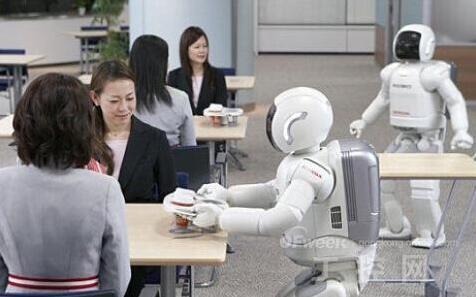Diversified development of robot applications
As a subdivision of intelligent manufacturing in China's Industry 4.0 strategy, the current development of service robots is still not comparable to that of industrial robots. However, with the advancement of the intelligentization of life services, service robots will have a very broad market space and development prospects because they are more in line with the needs of ordinary people. They are also attracting more and more interest and attention.
Compared with industrial robots, service robots are "young people" in the robot family. However, as people's demand for intelligent living services increases, service robots will have a broad development prospect, and their market size will even exceed that of industrial robots.

At present, the application of robots is gradually expanding from the traditional industrial fields to various aspects such as home services, medical and health, education and entertainment, and national defense and military. With the increase in people's demand for quality of life and smart living, service robots have become the "new enthusiasm" of the robot market, and the development is very fast, with a market share of more than 50%.
At the Robot World Cup Industry Summit, Xu Xiaolan, secretary-general of the 2015 World Robots Congress, pointed out: Currently, service robots characterized by personal, family, and industrial services around the world are close to 25 million units, and the market size reaches US$ 28 billion, which exceeds the industry. Half the size of the robot market. Moreover, with the breakthrough of service robots in the research and development of key technologies and the growing market demand, service robots will appear in people's daily life services at a faster speed.
Currently, the use of robots in the industrial sector is still hot, and the development of service robots has stood outlet, and with the advent of the industrial age 4.0, intelligent life, quickly go Ru Puluo among the general public. As Wang Shi, the founder of Vanke Group, stated: “The speed at which robots enter the community service will be much faster than everyone thinks.â€
According to industry estimates, the global service robot market will reach a 14% compound growth rate in the coming years. At the same time, with the pursuit of higher quality of life and intelligent experience, service robots have also been applied to new forms of urban life and new modes of retirement. This not only promotes the intelligence of these new industries, but also enables service robots to have a broader market space.
Service Robot Strategy in the Industry 4.0 Era
In 2015, the government introduced the "China Made 2025 Plan Outline." In this action plan called "China Industry 4.0," it is proposed that China must accelerate the application of service robots in the fields of health services, family services, education and entertainment, and improve the level of intelligent living services in China.
At the same time, many of our companies are keen grasp of the robot to a huge blue ocean service robots, the field for the needs of restaurants, public places of intelligence services, and constantly develop new service robot products. Such as intelligent restaurant guides explain robots, table cleaning robots, as well as people's daily life items handling robots, assisting robots.

Chart: Trends in the proportion of people aged over 60 in China
In addition, relevant data show that the elderly aged over 60 in China had reached 212 million at the end of 2014, accounting for 15.5% of the total population. By 2020, this proportion is estimated to exceed 17% and the elderly population will reach 243 million. As China enters an ageing society, the market demand for family care and family care and home services will grow rapidly, which also provides a larger market space for the development of service robots.

Chart: Proportion of China's Population Support Structure, 2006-2014
For example, in June 2015, Alibaba Group, in partnership with Foxconn, made a strategic investment of 14.5 billion yen for SBRH, a robot company owned by Japan’s Softbank Group, to promote the mass production and sales of emotional companion robot Pepper.
1 2 Next>European Socket Connector,30 Position European Socket Connector,Right Angle Male European Socket Connector,Male European Socket Connector
Dongguan Yangyue Metal Technology Co., Ltd , https://www.yyconnector.com
